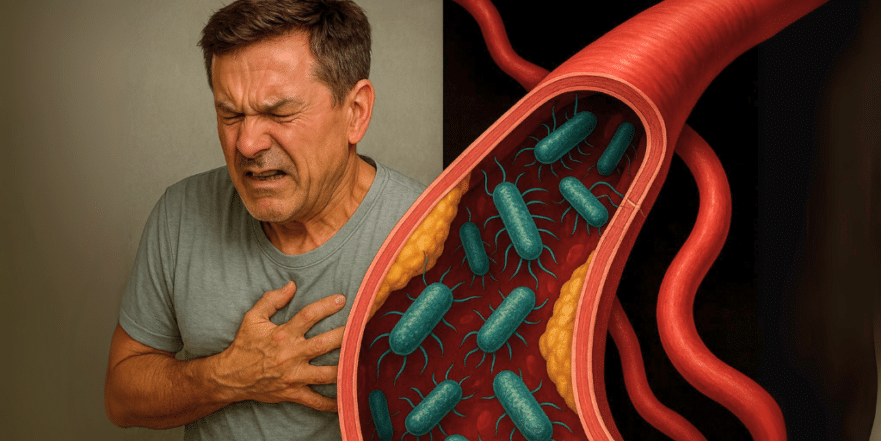
When you think about the causes of a heart attack, your mind probably jumps to high cholesterol, stress, or high blood pressure. But what if a hidden threat has been lurking in your arteries for years, originating from something as simple as your daily tooth-brushing routine? New research from Finland reveals that common mouth bacteria can form stealthy colonies inside heart arteries, evading your immune system until they suddenly activate, triggering the inflammation that can lead to a deadly heart attack.
This groundbreaking study, published in the Journal of the American Heart Association, examined arterial tissue from over 200 individuals, including victims of sudden death. Scientists found that these oral bacteria, known as viridans streptococci, establish hidden communities called biofilms within arterial plaques. These colonies can remain undetected for long periods before dispersing and setting off an inflammatory cascade that can rupture an artery.
Key Takeaways
- Researchers discovered that common mouth bacteria can form hidden colonies, or biofilms, inside the arterial plaques of your heart.
- These bacterial colonies can lie dormant for years, evading your immune system and resisting antibiotics.
- When activated, these bacteria can trigger intense inflammation, potentially causing plaques to rupture and lead to a heart attack.
- The findings suggest that preventing heart attacks may require new strategies that target these bacterial biofilms, in addition to managing cholesterol.
How Mouth Bacteria Reach Your Heart
The bacteria at the center of this discovery, viridans streptococci, are normal inhabitants of your mouth. They are among the first to colonize your teeth and form dental plaque. So, how do they travel from your mouth to your heart? They can slip into your bloodstream during everyday activities like chewing, dental cleanings, or even just brushing your teeth, especially if you have inflamed gums.
While your body usually clears these bacteria from the blood quickly, this study shows they can find a permanent home inside the rough, uneven surfaces of atherosclerotic plaques in your arteries. Once there, they build sophisticated communities called biofilms—protected shields that antibiotics can’t easily penetrate and your immune cells can’t see.
From Hidden Colonies to Sudden Activation
For years, these bacterial biofilms can exist as unrecognized squatters. The study found that immune cells called macrophages, which are supposed to identify and destroy invaders, are completely blind to these hidden colonies. The bacteria are essentially living in a stealth mode.
However, these communities don’t always stay quiet. Researchers believe that certain unknown factors can “activate” the biofilm, causing it to release more aggressive, free-floating bacteria. Once these activated bacteria disperse, your immune system finally spots the threat and launches a massive inflammatory attack. This sudden immune response releases enzymes that can break down and weaken the structure of the arterial plaque, making a rupture—and a subsequent heart attack—much more likely.
Why Past Antibiotic Treatments May Have Failed
This discovery may finally solve a long-standing medical mystery. For decades, scientists have suspected a link between infections and heart disease, but large clinical trials using antibiotics to prevent heart attacks have mostly failed. This left many experts doubting the infection theory.
The existence of biofilms offers a clear explanation. Bacteria tucked away inside a biofilm are in a dormant, protected state, making them highly resistant to antibiotics that are designed to kill active, free-floating bacteria. As the researchers noted, the failure of those past trials is likely explained by the fact that antibiotics are powerless against these entrenched, hidden colonies.
A New Way to Look at Heart Attack Prevention
This research challenges the traditional view of heart attacks as being caused solely by cholesterol and lifestyle factors. It suggests that a long-dormant bacterial infection inside your artery walls could be the real trigger. This might explain why some people with seemingly healthy cholesterol levels still suffer from sudden, fatal heart attacks.
Good oral hygiene is more important than ever, as it reduces the chances of bacteria entering your bloodstream in the first place. However, once a biofilm is established, it can persist for years as a hidden trigger. Looking ahead, preventing heart attacks may go beyond managing blood pressure and cholesterol. The future of prevention could involve new strategies designed to detect, disrupt, and destroy these dangerous bacterial biofilms hiding within our arteries.
Study Reference
Pylkäs, K., et al. (2025). “Viridans Streptococcal Biofilm Evades Immune Detection and Contributes to Inflammation and Rupture of Atherosclerotic Plaques.” Journal of the American Heart Association, 14, e041521. DOI: 10.1161/JAHA.125.041521.

